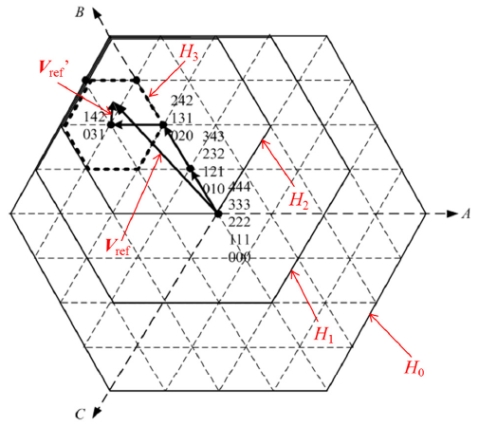TR2013-005
Generalized DC-link Voltage Balancing Control Method for Multilevel Inverters
-
- , "Generalized DC-link Voltage Balancing Control Method for Multilevel Inverters", IEEE Applied Power Electronics Conference and Exposition (APEC), DOI: 10.1109/APEC.2013.6520454, March 2013, pp. 1219-1225.BibTeX TR2013-005 PDF
- @inproceedings{Deng2013mar,
- author = {Deng, Y. and Teo, K.H. and Harley, R.G.},
- title = {{Generalized DC-link Voltage Balancing Control Method for Multilevel Inverters}},
- booktitle = {IEEE Applied Power Electronics Conference and Exposition (APEC)},
- year = 2013,
- pages = {1219--1225},
- month = mar,
- doi = {10.1109/APEC.2013.6520454},
- issn = {1048-2334},
- isbn = {978-1-4673-4354-1},
- url = {https://www.merl.com/publications/TR2013-005}
- }
- , "Generalized DC-link Voltage Balancing Control Method for Multilevel Inverters", IEEE Applied Power Electronics Conference and Exposition (APEC), DOI: 10.1109/APEC.2013.6520454, March 2013, pp. 1219-1225.
-
Research Area:

Abstract:
This paper presents a general dc-link voltage balancing control method for multilevel inverters based on a generalized space vector pulse width modulation (SVPWM) scheme, with no requirements for additional auxiliary- power circuits. The SVPWM scheme generates all the available switching states and switching sequences based on two simple mappings, and calculates the duty cycles simply as for a two level SVPWM, thus independent of the level of the inverter. The optimal switching sequence and optimal duty cycles for dc-link voltage balancing control are provided in the paper. Because all the measured signals are instantaneous values, the dc-link voltage balancing control method in the paper is suitable for any load without any assumption on the output current waveforms. The dc-link voltage balancing control in the paper is effective even when the capacitances of the dc-link capacitors of the multilevel inverter are not strictly equal or the voltage of the dc source of the multilevel inverter is fluctuating. Simulation results for a five-level inverter are given.
Related News & Events
-
NEWS APEC 2013: publication by Koon Hoo Teo and others Date: March 17, 2013
Where: IEEE Applied Power Electronics Conference and Exposition (APEC)
Research Areas: Applied Physics, Electronic and Photonic Devices, Electric SystemsBrief- The paper "Generalized DC-link Voltage Balancing Control Method for Multilevel Inverters" by Deng, Y., Teo, K.H. and Harley, R.G. was presented at the IEEE Applied Power Electronics Conference and Exposition (APEC).